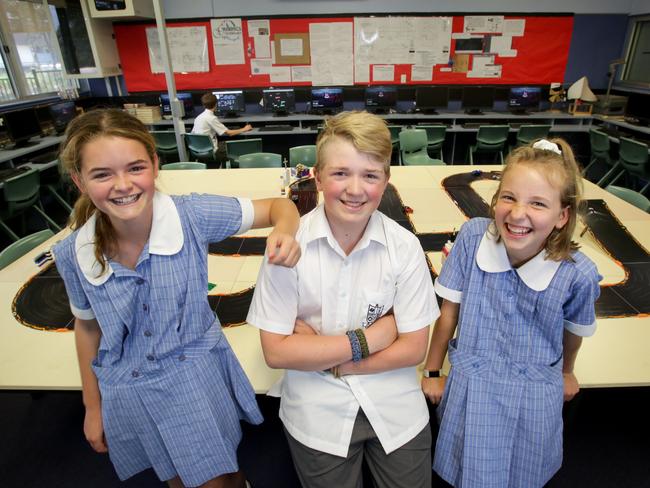Tech giant Oracle making learning fun in state’s classrooms
It’s dubbed The Fast and The Curious and it’s proving you can have fun and learn at the same time. The program – being trialled in 110 public schools across the state – will soon be added to the Years 9 and 10 curriculum.
Project Sydney
Don't miss out on the headlines from Project Sydney. Followed categories will be added to My News.
It looks like a fun racing car track in the classroom — but for students it is just the tip of a cutting-edge program now on trial in 110 public schools.
Students must hack into a bluetooth network to take control of the electric cars, solving programming and coding issues to make them run on the track.
The Fast And The Curious program is a partnership between NSW Education and tech giant Oracle.

Pennant Hills High School teacher Brad Wilson said it gives students an appreciation of the technology at work behind their laptops and other devices they use every day.
“This is teaching the back end, about how systems move,” Mr Wilson said.
He challenges students to program driverless cars to make deliveries between two properties — giving them a real life lesson in self-driving cars, which are predicted to be on city streets within the decade.
MORE FROM THE BRADFIELD ORATION
‘Green schemes and snobbery crushing Aussie dream’
Military-grade system to protect Harbour Bridge from drones
“They have Lego houses and you would start at one and pick up a package from the distribution centre and deliver it in the shortest amount of time possible.”
It gives students a taste of high-level tech skills like programming and data analysis that will be essential knowledge for most jobs of the future.
Students say it is so much fun it does not even feel like school work.
“It is hard when you first start, but once you learn how to use all the programming you can get it going quite easily,” Jordan Tucker, 13, said.

For fellow student Scott Romanis, 13, it has made him realise what the types jobs he might end up doing actually entail.
“I think in the future there will be and there should be cars which don’t need people to drive them,” he said.
“The awesome thing about the (model) cars is that there are so many options you can do, you can change the engine lights, you can make them flicker, you can make them change lanes and turn, make them do U-turns.”
The course will become a permanent addition of the Years 9 and 10 curriculum, education department technological and applied studies curriculum project officer Peter Davis said.
“When we came across and were shown this, we could really see the relevance of data in action,” Mr Davis said.
“Rather than being some sort of abstract thing that sits on a spreadsheet, you could actually see it doing something which was really engaging.”
Oracle Director Innovation Stuart Coggins said it was teaching students about machine learning and artificial intelligence, which were vital in today’s IT world.
“The students are really starting to learn how to use data,” he said.
“But it is not just about programming, it is about having those sorts of skills, the analytic skills everyone is using right now.”
